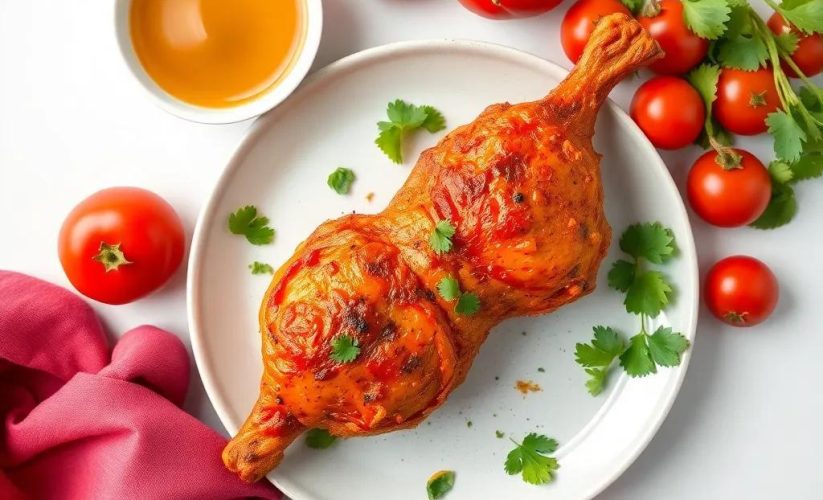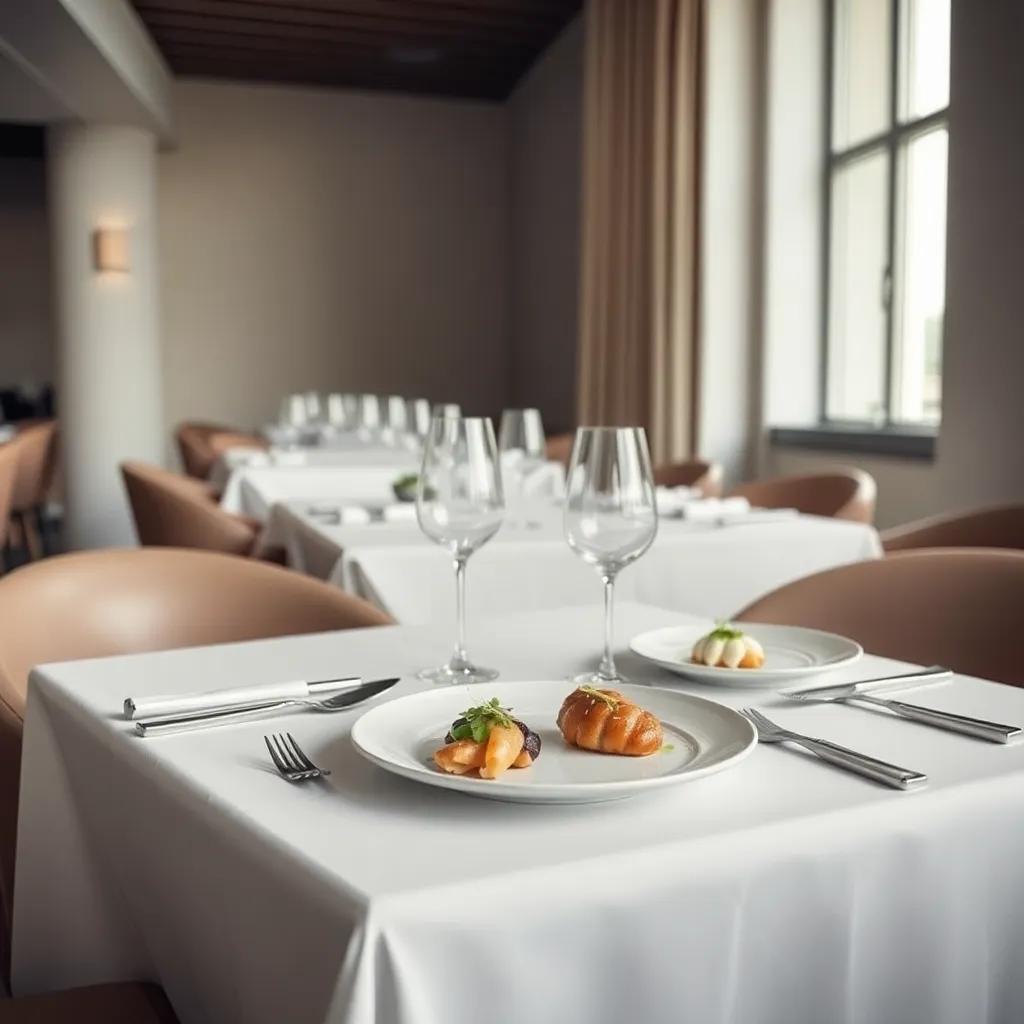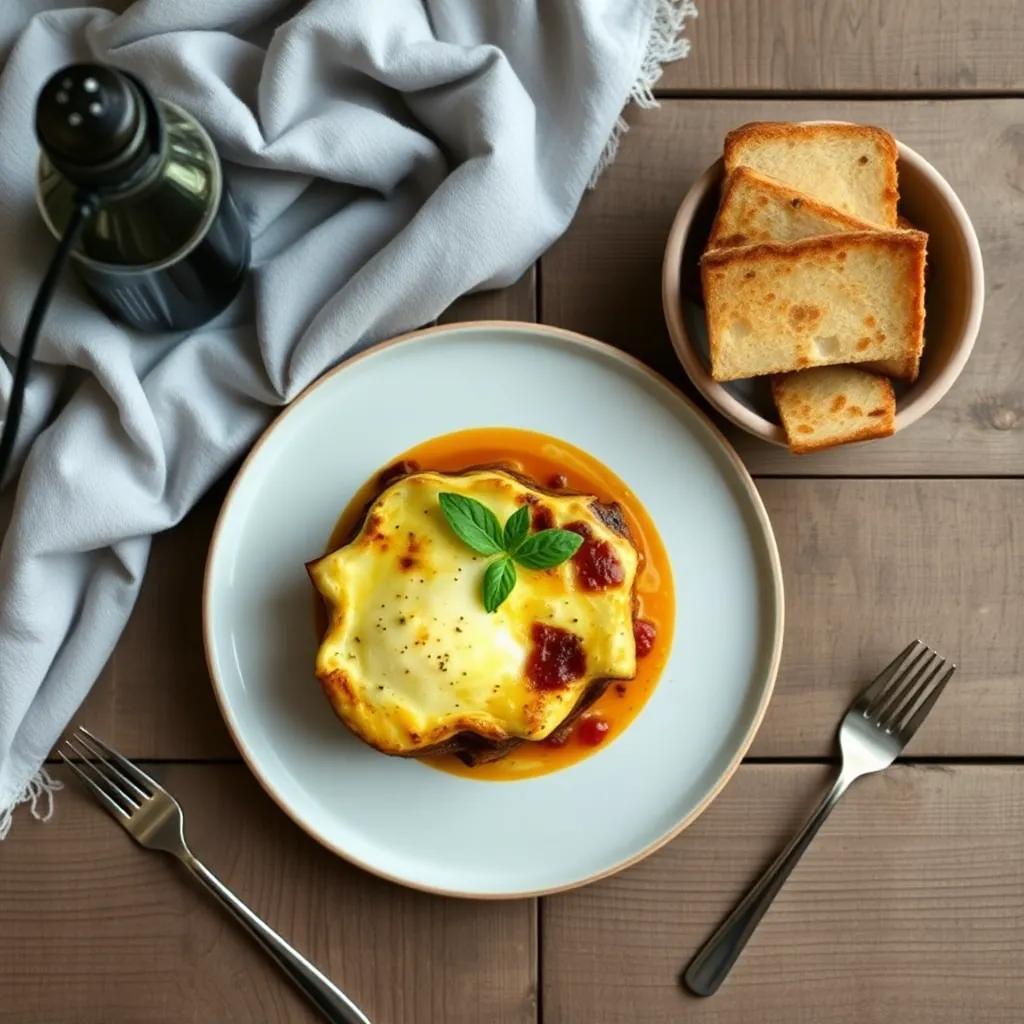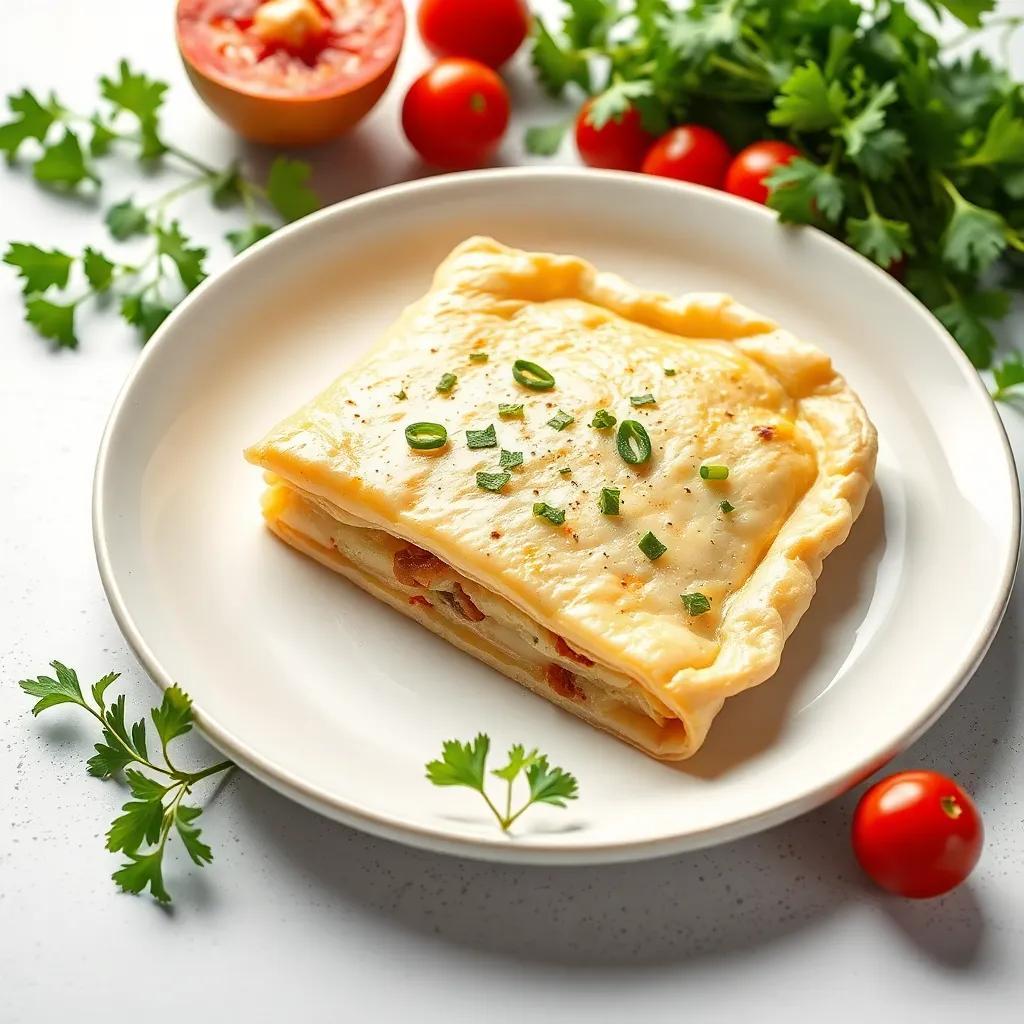The Ultimate Baklava Recipe: Easy, Irresistibly Flaky & Sweet
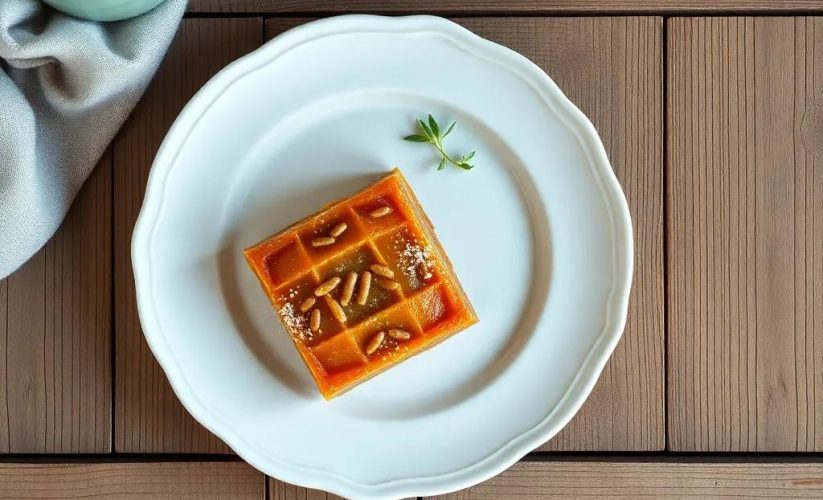
The Ultimate Baklava Recipe: Easy, Irresistibly Flaky & Sweet
🌍 Cuisine: Middle Eastern
⚙️ Difficulty: Medium
Ingredients
Nutrition Facts
320
Instructions
- Preheat the oven to 350°F (175°C). Grease a 9×13 inch baking dish with some of the melted butter.
- In a bowl, combine the finely chopped nuts, ground cinnamon, and ground cloves (if using). Set aside.
- Unroll the phyllo dough and cover it with a damp kitchen towel to prevent drying out.
- Place one sheet of phyllo in the baking dish and brush generously with melted butter. Repeat layering and buttering 7 more sheets.
- Evenly sprinkle a layer of the nut mixture over the phyllo layers.
- Continue layering phyllo sheets, brushing each with butter, then adding nut filling, repeating until nuts and phyllo are used up, reserving about 8 buttered sheets for the top layer.
- Finish with the top 8 sheets, each brushed with butter, ensuring the entire top is well coated.
- Using a sharp knife, cut the baklava into diamond or square shapes before baking.
- Bake in the preheated oven for 45–50 minutes, or until golden brown and crisp.
- While baklava bakes, prepare the syrup: in a saucepan, combine sugar, water, honey, lemon juice, and vanilla. Bring to a boil, then reduce heat and simmer for 10 minutes.
- Remove the syrup from heat and let it cool slightly.
- When baklava is done baking, immediately pour the warm syrup evenly over the hot baklava.
- Allow baklava to cool completely at room temperature for several hours or overnight to absorb the syrup fully.
- Optionally, dust with powdered sugar before serving.
- Serve baklava at room temperature and enjoy the flaky, sweet layers!
Serving Suggestions
- Serve with a cup of strong Turkish coffee or Arabic coffee to complement the sweetness.
- Pair with a scoop of vanilla ice cream for a refreshing contrast.
- Garnish with extra chopped pistachios for a colorful presentation.
- Drizzle additional honey or rose water syrup over the top for enhanced flavor.
- Enjoy as a festive dessert during holidays and special occasions.
- Serve alongside fresh fruits like figs or pomegranate seeds for a refreshing balance.
- Wrap leftover pieces individually and store at room temperature for up to 3 days.
Table of Contents
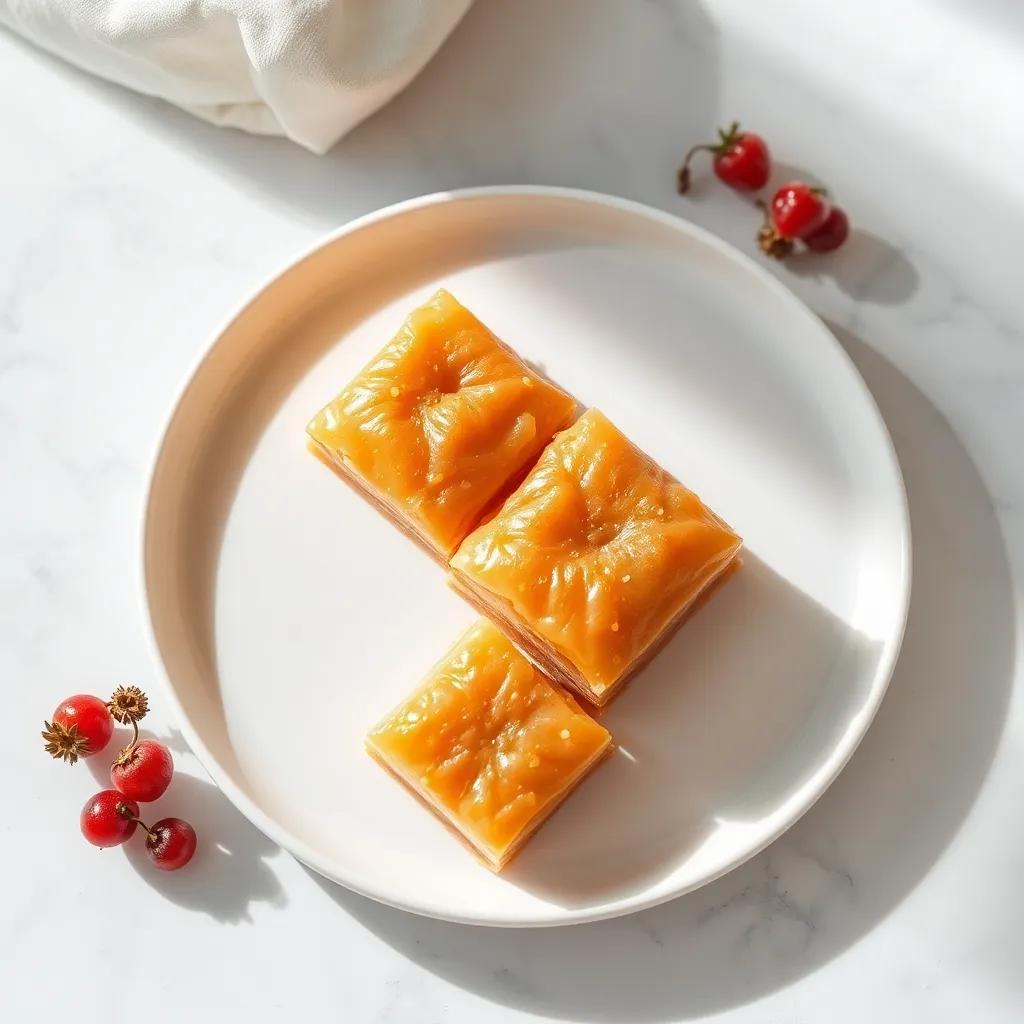
Intro
Baklava is one of those timeless desserts that seamlessly blends tradition with indulgence, creating a treat that’s as impressive to serve as it is delightful to eat. This recipe takes the classic Middle Eastern favorite and makes it accessible for home bakers who may be intimidated by its reputation. The result? Layers of wafer-thin, buttery dough baked to golden perfection, enveloping a fragrant, crunchy nut filling, all soaked in a luscious honey-infused syrup that leaves a lasting impression on every palate.
What makes this baklava truly special is how approachable the process is—while it involves a few careful steps, the layering technique is straightforward and well worth the effort. Whether you’re celebrating a festive occasion, hosting a dinner party, or simply craving a sophisticated homemade sweet, this baklava fits beautifully on your table. Its versatility shines through too: perfect when sliced into elegant diamonds for gatherings or savored piece by piece as an everyday treat.
Beyond its exquisite taste, working through the layers offers a satisfying culinary experience—a meditative rhythm of brushing butter and sprinkling nuts that connects you to centuries-old cooking traditions. When shared, this baklava creates moments of warmth and joy, turning any day into a celebration of flavor and craftsmanship.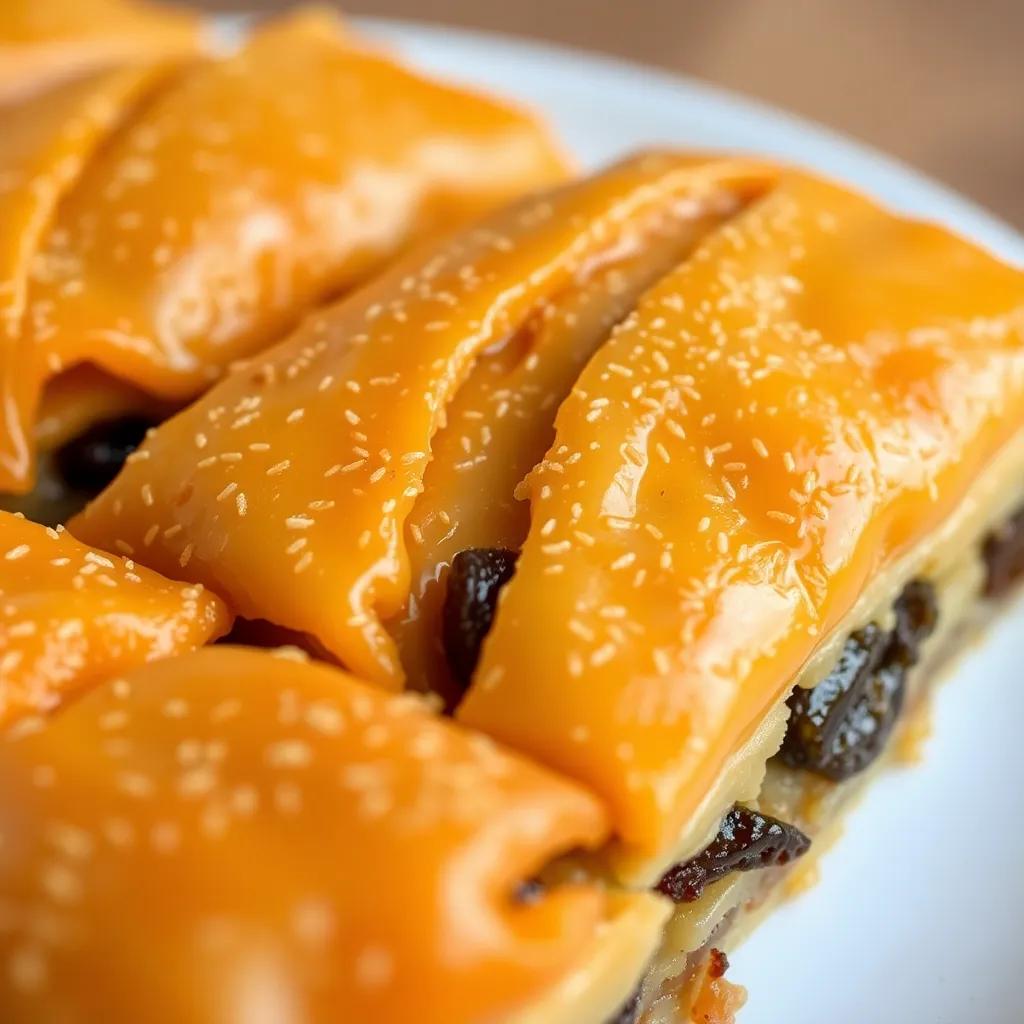
Ingredient Notes
When it comes to making the perfect baklava, a handful of key ingredients truly elevate the final result, turning it from a simple layered pastry into an unforgettable dessert experience.
Phyllo Dough:
This ultra-thin, paper-like dough forms the delicate, flaky layers baklava is famous for. Because phyllo dries out quickly, it’s essential to keep it covered with a damp towel while you work to maintain its pliability. When shopping, look for good-quality frozen phyllo sheets—these tend to separate more easily and hold up better during baking than the fresh, refrigerated versions. If phyllo isn’t available, a near substitute is challenging to find; however, some adventurous bakers try using very thin filo-style puff pastry, but the texture and flakiness won’t be quite the same.
Mixed Nuts (Walnuts, Pistachios, Almonds):
The nut blend provides the rich, earthy crunch that contrasts beautifully with the silky syrup and buttery layers. Freshness is key—choose raw, unsalted nuts for the best flavor and texture, and chop them finely but not to dust, preserving a pleasant bite. For a more traditional twist, pistachios can be the star ingredient, lending their rich green hue and unique sweetness. In a pinch, pecans or hazelnuts can be substituted, though these will subtly alter the flavor profile.
Unsalted Butter:
Butter is critical for brushing each layer of phyllo, ensuring the flakiness and golden color baklava is known for. Using unsalted butter gives you control over the salt level and prevents overpowering the sweet, spiced nut mixture. For a dairy-free option, melted coconut oil can be used, but note it will add a mild coconut aroma and may affect crispness slightly.
Honey:
The luscious honey-infused syrup is what binds everything together with sweetness and moisture. Opt for a pure, high-quality honey with floral notes for depth—wildflower or clover honeys work wonderfully. Avoid overly processed or inexpensive brands that can taste flat. If you prefer a different sweetness, maple syrup or agave nectar may be experimented with, but classic baklava really shines with honey’s complex flavor.
By paying attention to these cornerstone ingredients, you ensure that each bite of your baklava bursts with the right balance of texture, flavor, and aroma—transforming humble pantry staples into a rich, layered masterpiece.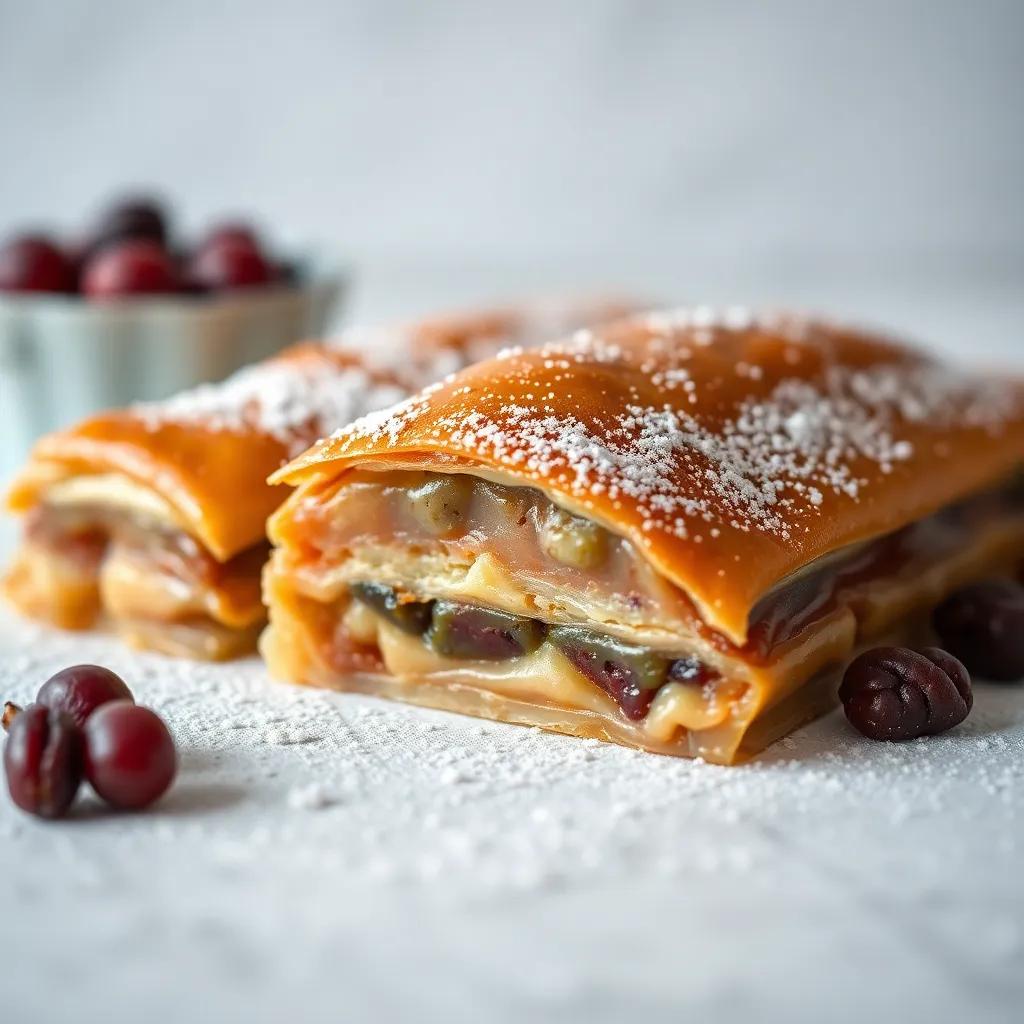
Tips & Variations
Mastering baklava is about more than just following steps—it’s about embracing the art of layering flavors and textures with a few thoughtful touches. Here are some pro tips and exciting variations to elevate your baklava game, plus ways to adapt it for different tastes and dietary needs.
Pro Tips for Perfectly Flaky, Golden Layers
- Handle phyllo dough with care: Always keep your phyllo sheets covered with a lightly damp towel while working to prevent drying and cracking. If a sheet tears, no worries—simply patch it with an overlapping piece and continue.
- Be generous and even with butter: Brushing each sheet with melted butter not only adds flavor but also creates those signature crisp, separate layers. Don’t skimp here—this is key to that perfect flaky texture.
- Cut before baking: Scoring your baklava into diamonds or squares before it goes into the oven allows the syrup to seep in afterward without disturbing the delicate layers. Use a sharp, thin-bladed knife for clean cuts.
- Let it rest: After drizzling the warm syrup, patience is your best friend. Allow the baklava to cool and absorb the syrup fully—ideally overnight—so every bite achieves that luscious, moist sweetness balanced with crispness.
- Customize your nut blend: Experimenting with the nut combination can add personal flair. Try adding toasted hazelnuts for a smoky note or a few chopped dried figs for bursts of sweetness in the filling.
Creative Variations to Try
- Spice it up: Beyond cinnamon and cloves, add warm spices like cardamom, allspice, or a pinch of nutmeg for a complex aroma that takes your baklava in a new direction.
- Citrus twist: Grate some lemon or orange zest into the nut mixture or syrup for a bright, fresh dimension that cuts through the richness.
- Chocolate layer: For an indulgent surprise, sprinkle a thin layer of finely chopped dark chocolate or cocoa nibs between some phyllo sheets along with the nuts. The chocolate melts slightly during baking, adding depth.
- Rose or orange blossom water: Stir a teaspoon of rose water or orange blossom water into your syrup for an authentic fragrant floral note often treasured in Middle Eastern desserts.
- Savory touch: For a modern fusion, add a pinch of sea salt to the syrup or top finished pieces with a sprinkle of flaky sea salt for that irresistible sweet-salty contrast.
Tailoring for Dietary Preferences
- Vegan-friendly: Substitute butter with melted coconut oil or vegan margarine (choose one with a high fat content for best flakiness). Use agave nectar or maple syrup instead of honey in the syrup to keep it fully plant-based.
- Gluten-free: Traditional phyllo is wheat-based, but you can find gluten-free phyllo-style doughs made from rice or sorghum flour in specialty stores. Adjust handling cautiously as these doughs can be more fragile—layer thinner sheets with extra care and increase butter/oil slightly to maintain moisture.
- Lower sugar options: Reduce the sugar in the syrup by a quarter or replace granulated sugar with coconut sugar or date syrup for a more natural sweetness with added nutrients. Keep in mind syrup consistency may vary slightly.
- Nut allergies: If nuts are a no-go, try finely chopped toasted seeds—like pumpkin or sunflower seeds—for crunch, or even crushed toasted oats or shredded coconut, though this will stray from classic baklava textures.
With these tips and twists in your culinary arsenal, each baklava batch you make will be a unique expression of both tradition and creativity—whether you stick close to the classic or venture into flavorful variations that surprise the senses. Let baklava be your canvas, and enjoy crafting this joyous layered delight!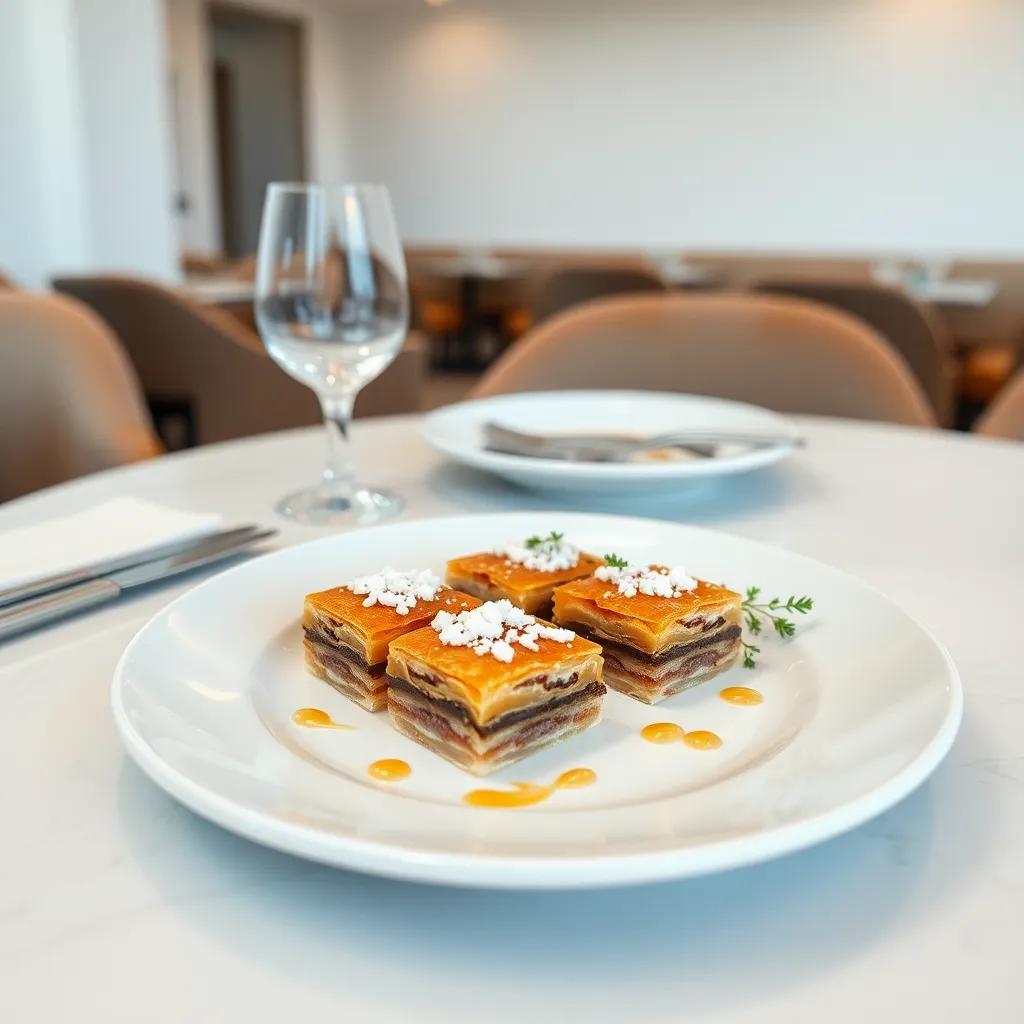
Leftovers & Storage
Leftover baklava is a treat that deserves proper care to maintain its signature crispness and syrupy sweetness. To keep your baklava as delicious as the day it was baked, start by allowing it to cool completely and absorb the syrup fully before storing. This rest period is crucial—it helps the layers set, preventing sogginess when refrigerated.
For short-term storage, baklava does well kept at room temperature, especially if you live in a cool, dry environment. Place the pieces in a single layer on a plate or shallow airtight container, separated by parchment or wax paper to avoid sticking. Stored this way, it can stay fresh for up to 3 days while retaining its flaky texture.
If you need to refrigerate leftovers, wrap each piece individually with plastic wrap or place parchment paper between layers before sealing them in an airtight container. Keeping the pieces well separated prevents moisture buildup and sogginess. Refrigeration will extend baklava’s shelf life to about 1 week, though note that the phyllo layers may lose some crispness and become a bit softer. Before serving, you can bring pieces to room temperature or briefly warm them in a low oven (about 275°F or 135°C for 5–7 minutes) to revive some crispness and refresh the honeyed aroma.
For longer storage, baklava freezes beautifully. Arrange the cooled, cut pieces in a single layer on a parchment-lined baking sheet and flash freeze until firm (about 1–2 hours). Then transfer them to a freezer-safe airtight container or heavy-duty zip-top bag with parchment between layers to prevent sticking. Frozen baklava maintains quality for up to 3 months. When ready to enjoy, thaw overnight in the refrigerator, then warm gently in the oven to restore that fresh-baked crunch.
If you’re packing baklava for gifting or travel, individually wrapping pieces in parchment or wax paper and placing them in a sturdy box keeps the layers intact and protects their delicate texture. This makes baklava a lovely homemade gift that holds up well through transit.
In summary, treating your baklava with a little extra attention in storage—whether at room temperature, in the fridge, or freezer—ensures every bite stays flaky, sweet, and utterly irresistible when you revisit your leftover treasure.
Behind the Recipe
Baklava is more than just a dessert—it carries with it centuries of history and cultural resonance that span across the Middle East, the Mediterranean, and beyond. Its origins are a tapestry woven from the traditions of the Ottoman Empire, where layered pastries and nut-filled sweets were highly cherished by royal kitchens and common households alike. This recipe taps into that rich heritage, bringing a piece of history to your own table with every flaky, golden bite.
What’s fascinating about baklava is how it serves as a culinary bridge between diverse cultures, each putting their own twist on this iconic treat. From Greece to Turkey, Lebanon to Armenia, and throughout the Levant and Balkans, baklava is a symbol of celebration and hospitality—often prepared for weddings, religious holidays, or family gatherings. Sharing baklava has long been an expression of warmth and generosity, a way to mark special moments with sweetness and joy.
On a personal note, many home bakers find that making baklava is almost meditative—a rhythmic layering of paper-thin dough brushed with butter, the tactile pleasure of sprinkling aromatic nuts, and the anticipation of drizzling fragrant syrup over a golden, bubbling tray. It’s a process that connects one to generations of artisans who perfected this dessert long before us. The simple act of preparing baklava invites patience and care, resulting in a deeply satisfying reward that delights not just the palate but the spirit.
This recipe is inspired by those timeless traditions but designed with accessibility in mind, simplifying some of the more intimidating elements without losing the essence of baklava’s flaky, sweet magic. With every preparation, you participate in a cultural story stretching across centuries—a story of craftsmanship, flavor, and shared moments of indulgence that continue to bring people together.
FAQ
Can I make baklava with gluten-free phyllo dough?
What nuts work best if I want to swap out walnuts?
How should I store baklava to keep it crispy and fresh?
Can I prepare the baklava syrup in advance?
What’s the best way to reheat leftover baklava without losing its crunch?
Can I make a vegan version of this baklava recipe?
How thin should the phyllo layers be, and can I fold them differently?
Enjoy Your Meal!
With its perfectly flaky layers, sweet honey drizzle, and a hint of warm spices, this baklava recipe captures the heart of a timeless dessert that’s both simple to make and utterly irresistible. Whether you’re treating yourself or impressing guests, each bite promises a delightful dance of textures and flavors that’s sure to satisfy any sweet tooth.
Ready to bring a little sweetness to your kitchen? Give this recipe a try, and don’t forget to share how it turns out! Leave a comment, rate the recipe, or tell us about your own special twist—we’d love to hear your baklava stories and ideas. Happy baking!


